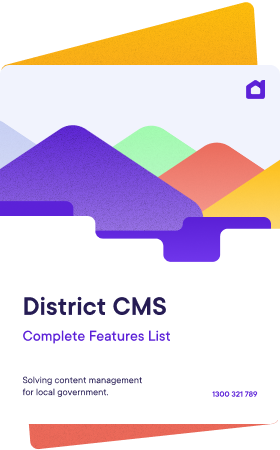Key to the rollout of successful digital transformation projects is the technology that enables government departments to work together and collaborate on projects, while maintaining the strict checks and balances we need to ensure proper governance. In short, replicating the way whole-of-government processes work.
One recent project in Australia is the digitisation of public notices by the Victorian Government. This relatively simple task has successfully digitised the complicated workflows of whole-of-government processes, and as a result offers an exciting glimpse into how government services may be transformed into the future.
Introducing District Public Notices
One of the key tasks of government is to share important information with the public. From changes in policy or public infrastructure to new development applications, publishing public notices is a legal and statutory requirement. They are critical for transparency and help keep the government accountable.
These notices are published in newspapers across the country. It can be expensive, but it’s an easy way to disseminate important information to the community.
In the state of Victoria, Australia, that changed in 2022. As part of its push towards digital transformation, the Victorian State Government legislated for public notices to be published online.
The benefits of going digital include better public access, better search functionality, plus substantial government cost savings.
On the outside, it looks like a no-brainer. Powered by District Public Notices, the Victorian Government’s new public notices platform is a simple-to-use interface that allows government departments to easily publish important information for the public. But what’s interesting is what lies beneath.
Whole-of-government workflow
In government departments all over the world, there are strict protocols and layers of red tape to manage the flow of information. In the case of public notices, these legal documents must undergo a rigorous approvals process prior to publishing.
Working in collaboration with Digital Victoria, the state-wide government entity responsible for digital transformation, District designed the Victorian Public Notices platform to replicate this whole-of-government workflow and permission structure. The result was a team-based structure with workflows that mirror the complicated processes of government, with specific tasks and permissions allocated to each role.
Essentials of government transformation projects
When designing digital solutions for whole-of-government processes, District follows the following principles:
- Collaboration: Effective collaboration both within and across government departments is essential for coordination, data sharing and decision-making.
- Replication: Any digital solution needs to incorporate the wide range of workflows and processes across multiple government departments.
- Security protocols: To protect sensitive information, it’s essential to balance the need to collaborate with the requirement for secure permissions and data governance.
- User experience: Prioritising intuitive interfaces and user-centric design to ensure it’s simple for everyone to use.
So how does District Public Notices meet the specific requirements of whole-of-government processes? In short, it enables seamless collaboration between government departments. Let’s take a closer look.
Team-based collaboration
District Notices allows users to be linked in teams. This enables notice authors from different departments to collaborate. These teams are managed by administrators, who can adjust the level of control each team has over the publication of notices.
Approval and permissions workflow
A comprehensive workflow and permission system allows administrators to view, filter and manage the status of notices from draft through to published format. Each administrator has been granted permissions appropriate to their role by a super admin. These workflows can be configured to meet different department/business requirements.
Comprehensive notifications
The notification system alerts both external and internal users, as well as administrators. Ranging from information about submitted notices, updates to accounts, or management of internal teams, these notifications help ensure transparency and accountability, as well as the smooth administration of the system.
Security
Users are assigned roles, with each role carrying specific permissions and abilities, which are managed and restricted by administrators. Two-step authentication ensures secure login for administrators.
Categories & search
Public users are able to subscribe to topics, categories or geographical locations, and will receive notifications when new notices are published in those areas of interest. In addition, the platform features an easy-to-use search function for both categories and/or legislation, which enables information-gathering of historical and current notices.
External engagement
In District Public Notices, businesses and external organisations can create and manage their own notices, while still being moderated and controlled from within the government. This functionality enables collaboration across public and private-sector projects, while maintaining appropriate checks and balances.
User friendly design
The platform employs an easy-to-use CMS with an intuitive front end dashboard that simplifies the task of submitting and editing notices. In the back end, the user-friendly drag-and-drop components, sitewide banners and registration form customisation simplify page and content management for internal users.
Community engagement
Governments around the world are looking to community engagement practices in order to strengthen public discourse and get data-driven insights to improve outcomes for public projects.
With its seamless integration with leading community engagement software, District Public Notices can now incorporate community engagement tools such as surveys, community discussion threads and forums into notices, and vice versa.
This development is an exciting step towards government transformation projects being able to support meaningful collaboration not just across departments and organisations, but across the community as well.
The push towards digital transformation is making our governments more efficient, collaborative, and responsive to community needs. But that can’t be at the expense of security and accountability.
That’s why the development of District Public Notices, which replicates whole-of-government processes, is a critical step forward. It safeguards important approval and workflow processes, while enabling seamless collaboration between government departments and beyond.
District Public Notices has transformed the way legislative functions can be managed across government, and offers an exciting glimpse into the possibilities of government transformation into the future.




